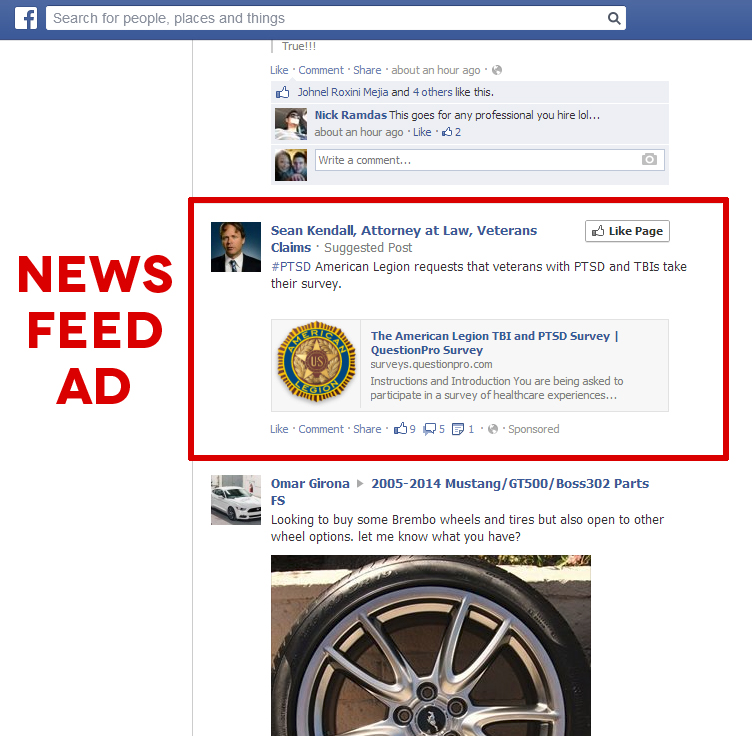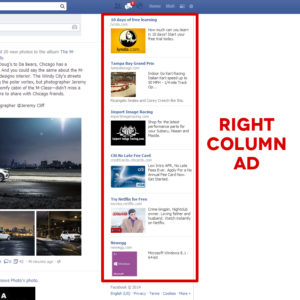Last updated on November 1st, 2017 at 02:16 pm
 In our last post, we covered some of the finer points of using Google Adwords to get more new patients for a dental office. In this post, we’ll going to look at:
In our last post, we covered some of the finer points of using Google Adwords to get more new patients for a dental office. In this post, we’ll going to look at:
1. New patient advertising on Facebook, and
2. How to budget your online advertising (there’s a few things to avoid so you’re spending enough to get results, but not wasting money in the wrong places).
1. New Patient Advertising on Facebook
Facebook only allows ads created and paid for through Facebook itself (not Google ads, banner ads, or any other type of online ads).
Facebook offers the ability to target and reach specific audiences. Your Facebook ad account offers a wide menu of demographic categories that you can specify and choose from to narrow or broaden your target audience. For example, you can select location, workplace, relationship status, education level, language, groups they belong to, and things they “like” or are interested in. Facebook will then only advertise to people who fit the specific demographics you chose.
Facebook also offers the “cool” factor; it has become very clever with its various methods of advertising, and it’s easy to sneak some ads into a person’s normal flow of interest, without them tuning out the ad.
Here’s a few different ways you advertise through Facebook:
- Suggested Posts (News Feed Ads): When browsing Facebook on your own personal account, you may have seen posts with the label “suggested posts” appearing in your Facebook news feed (they look just like a post from one of your friends). That’s a paid ad. Facebook calls these “News Feed Ads,” because they appear in people’s news feeds. One of the main reasons people go on Facebook is to look at interesting things in their news feed, so they are inherently receptive to these ads. Outside of Google Adwords, these ads are one of the most effective ways to reach interested public without them ignoring or resenting you. We (MGE) have found the most success on Facebook with these ads.

- Right Column Ads: You can also place advertisements on the right hand side of the page. These are called “right column” ads, and they very clearly look like ads. People may ignore these, so in order to get attention you need to have a photo and tagline that really stands out. Marketers often use wacky photos, bright colors, and hyperbole for these ads. We ourselves have not had as much success with these ads (as opposed to suggested post ads), although some other marketers have.

- “Boosting” your Posts: When you post something on your Facebook page (a normal update or photo or some such post), you can “boost” that post, which means that Facebook will show it to more people. You can choose to either A) show it to “friends” of your “friends,” or B) target specific demographics, similar to an ad. What types of things should you post? Well, you’ve got a wide range of things to choose from, including: special offers, discounts, links to your website, videos, or just any interesting status update that you think will get more people to notice you and like your page. You can set the budget very low for each post and experiment with what works or doesn’t work.
- Advertising Options: You can use Facebook to advertise your practice Facebook page (a “likes” campaign that will encourage more people to “like” your page), an event page, or a web page (from your website) featuring a specific product and/or service. Your Facebook ads would link back to any one of the three.
2. Budgeting Your Online Ad Campaigns
With Google Adwords and Facebook, your aim is to get direct responses to your advertising campaign, so the ad pricing model most suitable for this is “cost-per-click.” That means that you will only get charged when someone clicks on your ads.
Now, there is no set price for how much you should pay once someone clicks on your ad—but the more you are willing to pay, the better your chance of someone seeing your ad. On top of that, your bid multiplied by the number of clicks is the key factor determining your ad rankings in Google.
You can set up a regular budget on Google Adwords and Facebook depending on how much you are willing to spend on your online advertising. For example, you could set it to $1,000 a month and pay an average of $4.50 per click. Or lower or higher. Some marketers recommend assigning as much as 3% of your revenues to online advertising, but you’ll have to work out your own budget and test it out to see how much is worth investing for you. We’d suggest starting out with what you’re comfortable with and increasing from there. It’s important that you work up your online e campaigns while not dropping any other type of marketing that is already working.
 Experimentation is the Key
Experimentation is the Key
As far as budget goes, what matters most is that it’s working. Paying $1,000 for ads that get you zero new patients would be spending way too much. But I’m sure you’d be absolutely happy with spending $10,000 on an ad that got 500 quality new patients.
So the most important aspect of advertising online is testing for results. Try a few different tagline and photo combinations and see which ones get lots of clicks. Throw out the ones that don’t. Try targeting a few different keywords or demographics, and see if a high percentage of the clicks actually turn into calls and appointments for you. If they don’t actually result in new patient inquiries, throw them out. We could tell you what should or shouldn’t work all we want, but you won’t know until you test a few things out and see for yourself.
One caution, though: You also need to ensure that your website is effective at encouraging potential new patients to call or schedule an appointment online. If an ad is getting a high number of clicks, but a low number of appointments, then perhaps you website isn’t in tune with what potential patients want and what will motivate them to call. This is where the surveying you do at the MGE New Patient Workshop becomes very important.
Also, you may run some ads and then see that the number of new patient calls you get goes up—even though you can’t track the phone call directly back to that ad. That’s another things to watch out for, because you may find that people see the ad and go to your website—but don’t actually call until later. It looks like the ad “wasn’t working” even though it did eventually get you more new patient calls. So beware of canceling an ad only to discover that your number of calls/online appointments subsequently drops.
Cost-per-click will also give you some insight into which ads are more effective in terms of engaging the users’ attention. This information can help you streamline any other marketing efforts you do and make them more successful.
Of course, there’s much more that should be learned about the world of online advertising, but this should get you started on Facebook and Google. Best of luck in your marketing endeavors!


